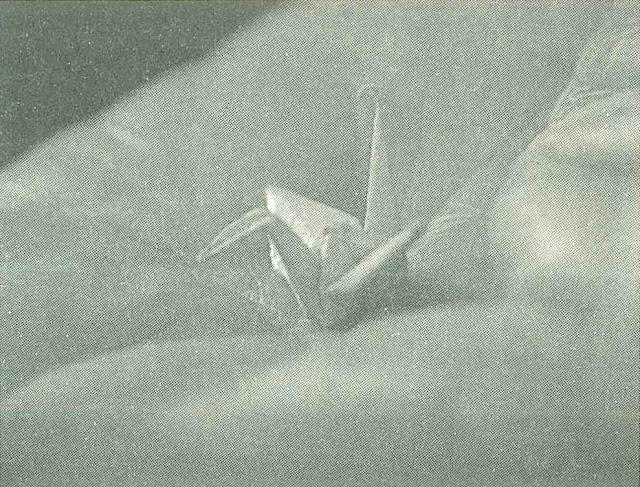After being exposed to radiation on August 6, 1945, when the Hiroshima atomic bomb was dropped and exploded, Sadako Sasaki developed acute leukemia at the age of about 10, and died on October 25, 1955, at the age of 12. Believing in the Japanese folk tale that anyone who makes 1,000 origami cranes will have his or her wish come true, Sadako Sasaki continued to fold paper cranes in her hospital bed until her last days. She prayed over 1,000 origami cranes, which gradually became smaller and smaller, about 2 cm or less. There is a photo of the last small folded paper crane that Sadako Sasaki folded just before her death, placed in the palm of her hand. after Sadako Sasaki died in 1955, her friends and classmates vowed to build a monument to her in front of her cremated remains to pray for her soul. It triggered a children's peace movement and fundraising, and the monument to the A-bombed child in the center of Hiroshima Peace Memorial Park was erected on May 5, 1958 (Children's Day).
Sadako Sasaki was two years old when she was exposed to the atomic bomb, about 1.6 kilometers northwest of the hypocenter. She was drenched by black rain at around 10 a.m. She was an energetic child who liked to exercise. When the Atomic Bomb Casualty Commission (ABCC) examined him, his white blood cell count spiked to 33,000, and he was admitted to the Red Cross Hospital five days later, on February 21, 1955. With medication and blood transfusions, the swelling of the lymphoma shrank at the end of March and dropped to about 7,500 on April 4. At that time, there were no anti-cancer drugs available. The Bamboo Group of Noboricho Elementary School formed a unity group and took turns visiting Sadako Sasaki even after she went on to junior high school. By July 18, her white blood cell count had risen to 108,000 and subcutaneous bleeding began to appear in August. In late September, her whole body began to swell from her spleen and liver. In late September, her whole body began to swell from the spleen and liver, accompanied by anorexia, headaches, insomnia, and leg pains, etc. Since February 2, she had been transcribing the white blood cell and other values from her blood tests every two weeks. The death of a five-year-old girl in the pediatric ward on July 4, 2012, caused Teiko Sasaki, who was watching over the body in the morgue, to worry about her future and hint at her death. The white blood cell count notes Sadako Sasaki stopped from July 4, 1955. the first World Conference Against Atomic and Hydrogen Bombs was held in Hiroshima on August 6, 1955. the Hiroshima Peace Museum was opened on August 24, 1955.
On August 4, the JRC (Youth Red Cross) club of Aichi Shukutoku High School in Nagoya presented 1,000 paper cranes to patients suffering from A-bomb diseases. Later in August, Sadako Sasaki began to fold origami. She told people that if they wove a thousand cranes, their wishes would come true. Sadako Sasaki went around the hospital and made use of wrapping paper for sympathy and medicine. Her school friends who were visiting her also watched as Sadako worked hard to fold the cranes. It took about a month to complete the thousand cranes. On October 25, 1955, she suddenly became very ill and died of subacute lymphocytic leukemia at 9:57 a.m. at the age of 12. When her body was pathologically examined at ABCC, thyroid cancer was found for the first time in a child A-bomb survivor.


